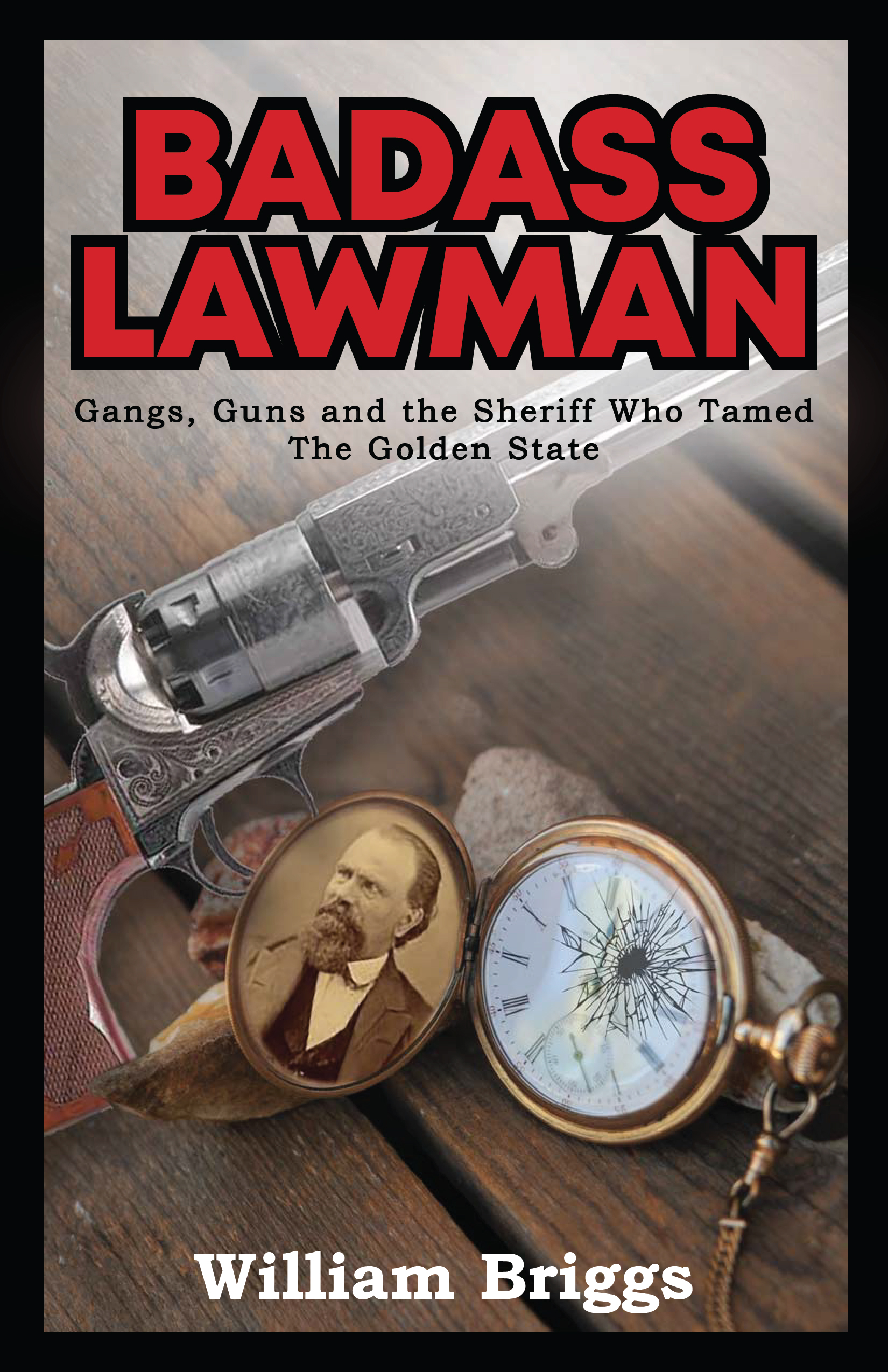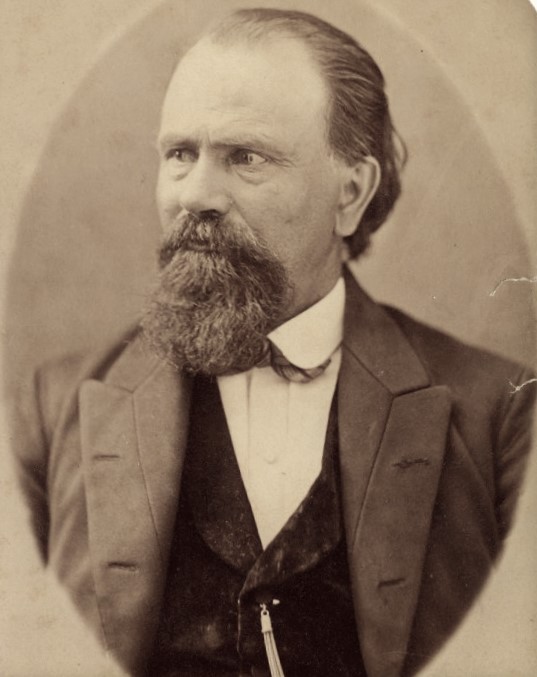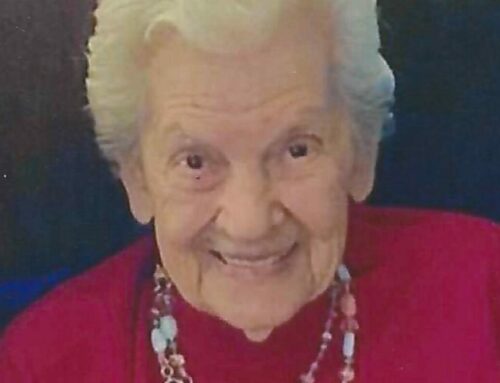John Hicks Adams had come to California during the gold rush.
![]()

By William Briggs


Bill Briggs
Law enforcement has changed significantly since the 19th century, as I learned while researching and writing “Badass Lawman,” a biography about less-well known gunfighter sheriff John Hicks Adams.
While many sheriffs in the Old West were simply the meanest dog in the pack, Adams displayed enough courage and dogged determination to enforce the law that Santa Clara County voters elected him to five terms in office — a record tenure in those days.
The office of a county sheriff has roots back to medieval England when Norman conquerors divided England into counties (or shires) and appointed a shire reeve to administer them. Their primary function was to collect taxes (think Sheriff of Nottingham in Robin Hood legends). The office of sheriff came to America with the Puritan migration in the 17th century.
 After California statehood in 1850, Santa Clara County adopted a county supervisor form of government. John Hicks Adams had come to California during the gold rush.
After California statehood in 1850, Santa Clara County adopted a county supervisor form of government. John Hicks Adams had come to California during the gold rush.
With profits from mining, he bought a section of the Rancho Solis Mexican land grant west of Gilroy Township and tried ranching before going into public service as the first supervisor representing Gilroy and Almaden. In 1858, he donated land for a school on the site of an ancient Amah Mutsun Native American village along Uvas Creek. The school operated there for a century. Today, the site along Watsonville Road is administered as Chitactac-Adams Historical County Park.
John Hicks Adams next ran for county sheriff. Townships usually had constables and any number of deputies to handle local law enforcement.

John Hicks Adams was a prominent sheriff in Santa Clara County in its “Wild West” days.
More serious crime fell to county sheriffs. (Larger cities like San Francisco also had police departments.) U.S. marshals enforced federal laws. Aspirants for the sheriff ‘s job ran as political candidates. Adams ran as a Republican, the party of Abraham Lincoln, with whom he shared Illinois roots.
As Adams became sheriff, California may have been far from the Civil War battlefields, but, nonetheless, it was caught up in the national conflict. A movement to split the young state into two had been narrowly defeated, and there were large pockets of pro-Confederacy secessionists throughout the state.
One group of partisans took to robbing stagecoaches as a source of cash to help finance the Confederate cause. After a daring stage holdup near Placerville the gang hid out near the New Almaden quicksilver mines, just northwest of Morgan Hill.
In a Hollywood-worthy shootout, Sheriff Adams stopped a bullet with his vest pocket watch, before killing or capturing these Partisan Rangers. He helped prevent California gold from reaching the Confederacy and thus played his part in preserving the Union.
Perhaps Adams is best known for his dogged pursuit of the bandido Tiburcio Vasquez, California’s most notorious robber and killer. Among Vasquez’s targets was the 21 Mile House, where a Starbucks is today in Morgan Hill’s Vineyard Town Center. Adams, along with other California lawmen, chased Vasquez up and down the state for years. When he was finally captured, he was jailed in San Jose, where Sheriff Adams oversaw his execution in 1875.
 Adams tried for re-election to a sixth term, but political winds had shifted, and he was denied his party’s nomination. He returned to his mining interests and by 1878 was in Arizona looking for silver, along with his friend Cornelius Finely, the former Santa Clara County Clerk. Appointed deputy U.S. Marshals to help stem the crime of a large gang of cattle and horse thieves known as the Cow-Boys, Adams and Finley were ambushed and killed by a Mexican gang. His last assailant was killed during Wyatt Earp’s Vendetta Ride from Hell three years later.
Adams tried for re-election to a sixth term, but political winds had shifted, and he was denied his party’s nomination. He returned to his mining interests and by 1878 was in Arizona looking for silver, along with his friend Cornelius Finely, the former Santa Clara County Clerk. Appointed deputy U.S. Marshals to help stem the crime of a large gang of cattle and horse thieves known as the Cow-Boys, Adams and Finley were ambushed and killed by a Mexican gang. His last assailant was killed during Wyatt Earp’s Vendetta Ride from Hell three years later.
The bodies of Adams and Finely were returned to San Jose and buried in Oak Hill Cemetery. Many of his descendants still live in Santa Clara County. John Hicks Adams lacks the fame of other more well-known Old West lawmen. He wasn’t flamboyant like Wild Bill Hickok, a self-promoter like Buffalo Bill Cody, or a complex anti-hero like Wyatt Earp.
He was a no-nonsense officer of the law, tough, humble and brave. He should be better known by county residents.
If the Nov. 8 election candidates for sheriff, with all the modern techniques of law enforcement, can match his integrity and perseverance, Santa Clara County will be well served.
William Briggs is author of “Badass Lawman, Gangs, Guns and the Sheriff who Tamed the Golden State.” He is past co-president of Morgan Hill Historical Society, a former professor and dean in the California State University system, and a 45-year resident of South Santa Clara County.






